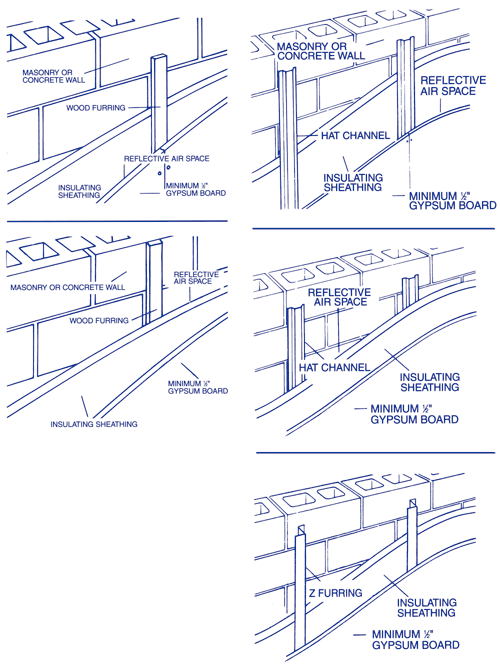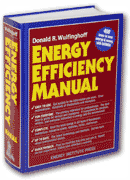Overview of…
7.2 Walls and Soffits
This part of the Energy Efficiency Manual presents energy conservation measures that minimize heating and cooling by effective insulation of walls and soffits.
Heat loss through the opaque portions of walls contributes a large fraction of the heating cost of most buildings. Wall heat gain is typically a lesser factor in cooling load, but it can be important in many buildings.
The time to minimize this heat loss is while the building is still being designed. In new construction, improving wall insulation costs little. In fact, it may reduce overall construction cost by reducing the heating and cooling capacities required. Good wall insulation may even allow you to eliminate perimeter heating systems.
Improving wall insulation on a retrofit basis is practical primarily in buildings that have large areas of opaque wall. You can usually find a way of increasing the insulation value of walls, but the cost may be high in relation to the economic benefit.
The various methods that you can use to insulate walls are explained here, with emphasis on the important advantages and drawbacks of each method. Options for insulation inside the wall cavity include fiber batt insulation and poured insulation, such as perlite, vermiculite, foam beads, and other materials. Options for installing insulation on the inside surface of the wall primarily use rigid board insulation made of fiber or foam. Options on the outside surface include sprayed foam and rigid foam board insulation. Also explained is improving the insulation of curtain walls, but in new construction and in existing buildings. You will learn to select the best insulation materials for each method, including their insulation properties and R-value, fire ratings, and other essential characteristics. Equally important, you will learn about vapor barriers and their relationship to insulation.
Click here to return to the Table of Contents


